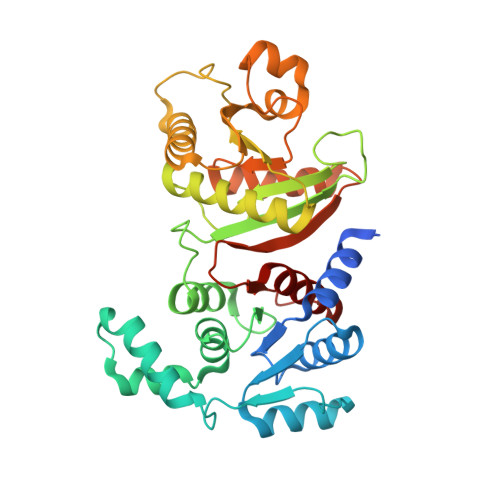Biophysical and biochemical studies support TP0094 as a phosphotransacetylase in an acetogenic energy-conservation pathway in Treponema pallidum.
Brautigam, C.A., Deka, R.K., Tso, S.C., Liu, W.Z., Norgard, M.V.(2023) PLoS One 18: e0283952-e0283952
- PubMed: 37200262
- DOI: https://doi.org/10.1371/journal.pone.0283952
- Primary Citation of Related Structures:
8FIR - PubMed Abstract:
The mechanisms of energy generation and carbon-source utilization in the syphilis spirochete Treponema pallidum have remained enigmatic despite complete genomic sequence information. Whereas the bacterium harbors enzymes for glycolysis, the apparatus for more efficient use of glucose catabolites, namely the citric-acid cycle, is apparently not present. Yet, the organism's energy needs likely exceed the modest output from glycolysis alone. Recently, building on our structure-function studies of T. pallidum lipoproteins, we proposed a "flavin-centric" metabolic lifestyle for the organism that partially resolves this conundrum. As a part of the hypothesis, we have proposed that T. pallidum contains an acetogenic energy-conservation pathway that catabolizes D-lactate, yielding acetate, reducing equivalents for the generation and maintenance of chemiosmotic potential, and ATP. We already have confirmed the D-lactate dehydrogenase activity in T. pallidum necessary for this pathway to operate. In the current study, we focused on another enzyme ostensibly involved in treponemal acetogenesis, phosphotransacetylase (Pta). This enzyme is putatively identified as TP0094 and, in this study, we determined a high-resolution (1.95 Å) X-ray crystal structure of the protein, finding that its fold comports with other known Pta enzymes. Further studies on its solution behavior and enzyme activity confirmed that it has the properties of a Pta. These results are consistent with the proposed acetogenesis pathway in T. pallidum, and we propose that the protein be referred to henceforth as TpPta.
- Department of Biophysics, UT Southwestern Medical Center, Dallas, Texas, United States of America.
Organizational Affiliation:


















